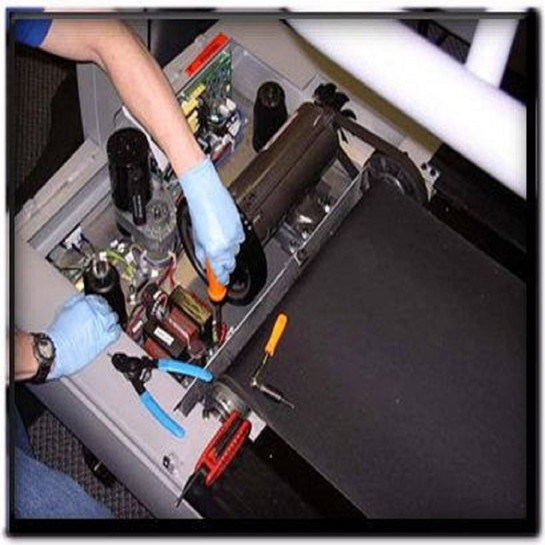How Does A Speed Sensor Function?
A Comprehensive Guide on How Speed Sensors Function
Speed sensors play a crucial role in various industries, enabling the measurement and control of rotational or linear speed. These devices provide valuable data that help in improving efficiency, enhancing safety, and optimizing performance. From automotive applications to industrial machinery and exercise equipment, speed sensors are utilized in a wide range of systems. This comprehensive guide aims to demystify the mechanics behind speed sensors, shedding light on their working principles, types, applications, troubleshooting, and future advancements.
Importance of Speed Sensors in Various Industries
Speed sensors have become an integral part of modern industries, serving critical functions in multiple sectors. In the automotive industry, speed sensors are essential for measuring wheel speed, enabling anti-lock braking systems (ABS) and traction control. Moreover, they facilitate the calculation of vehicle speed, which is crucial for cruise control systems. In the field of aerospace, speed sensors are utilized to monitor the rotational speed of aircraft engines, ensuring optimal performance and safety. In the manufacturing sector, speed sensors are employed to measure the speed of conveyor belts, motors, and other machinery, enabling precise control and preventing accidents. These examples illustrate the significant role that speed sensors play in various industries, driving efficiency and enhancing safety. Regarding exercise equipment speed sensors only detect motion, they do not control speed.
Types of Speed Sensors
There are several types of speed sensors available, each with its own working principle and applications. Magnetic speed sensors, also known as Hall-effect sensors, utilize a magnetic field to detect the speed of a rotating object. They are commonly used in automotive and exercise equipment applications, such as measuring wheel speed. Optical speed sensors, on the other hand, employ light beams to calculate the speed of a moving object. They are commonly found in industrial machinery and robotics, where precise speed control is required. Another type is the inductive speed sensor, which uses electromagnetic induction to measure speed. These sensors are widely used in applications where contactless measurement is necessary, such as in the textile industry. Each type of speed sensor has its own advantages and limitations, making them suitable for specific applications.
Understanding the Working Principle of Speed Sensors
Speed sensors operate based on various principles, depending on their type and design. Magnetic speed sensors detect changes in the magnetic field caused by the rotation of a target object. The sensor consists of a magnet and a Hall-effect sensor, which generates a voltage proportional to the magnetic field. This voltage is then converted into speed measurements. Optical speed sensors, on the other hand, utilize a light-emitting diode (LED) and a photodetector to measure speed. The LED emits light, which is reflected by a moving target. The photodetector receives the reflected light and calculates the speed based on the frequency of the light pulses. Inductive speed sensors work by generating an electromagnetic field that induces voltage in a target object. The induced voltage is then used to determine the speed. Understanding these working principles is essential in selecting and utilizing the appropriate speed sensor for a specific application.
Common Applications of Speed Sensors
Speed sensors find applications in a wide range of industries and systems. In the automotive sector, they are used for measuring wheel speed, enabling essential safety features such as ABS and traction control. Additionally, they contribute to speedometer readings and cruise control systems. In the aerospace industry, speed sensors are vital for monitoring the rotational speed of aircraft engines, ensuring optimal performance and safety. In manufacturing, speed sensors are employed to measure the speed of conveyor belts, motors, and other machinery, enabling precise control and preventing accidents. They are also utilized in wind turbines, robotics, marine vessels, and many other fields where speed monitoring is crucial. The versatility of speed sensors makes them an indispensable component in modern technology.
Factors Affecting the Accuracy of Speed Sensors
The accuracy of speed sensors can be influenced by various factors that need to be considered for optimal performance. One of the primary factors is the target object's surface finish and material. Irregularities or reflective surfaces may affect the sensor's ability to detect speed accurately. The distance between the sensor and the target object is another crucial aspect. Maintaining the appropriate gap ensures reliable speed measurements. Environmental conditions, such as temperature and humidity, can also impact sensor accuracy. It is essential to select speed sensors that are suitable for the specific operating conditions of an application. Regular calibration and maintenance are necessary to ensure accurate readings over time.
Troubleshooting and Maintenance Tips for Speed Sensors
To maintain the optimal performance of speed sensors, regular troubleshooting and maintenance are essential. If a speed sensor is not providing accurate readings, it is crucial to check for any physical damage or misalignment. Cleaning the sensor and the target object's surface can also improve accuracy by removing any dirt or debris that may interfere with the sensor's operation. Ensuring the proper electrical connections and addressing any wiring issues is critical as well. Regular calibration and testing should be performed to verify the accuracy of speed sensor readings. By following these troubleshooting and maintenance tips, the lifespan and reliability of speed sensors can be significantly improved.
Advancements in Speed Sensor Technology
As technology continues to advance, speed sensor technology is also evolving, offering improved performance and new features. One significant advancement is the integration of speed sensors with wireless communication capabilities. This allows for real-time monitoring and remote control, enhancing convenience and efficiency. The miniaturization of speed sensors has also been a focus, enabling their integration into smaller and more compact devices. Furthermore, advancements in sensor materials and manufacturing techniques have led to increased durability and reliability. These technological advancements pave the way for new applications and further integration of speed sensors into various industries.
Future Trends in Speed Sensor Development
The future of speed sensor development holds exciting possibilities. With the growing demand for autonomous vehicles, speed sensors will play a crucial role in ensuring safe navigation and control. Additionally, advancements in sensor fusion technologies, combining data from multiple sensors, will enhance the accuracy and reliability of speed measurements. The integration of artificial intelligence and machine learning algorithms with speed sensors will enable predictive maintenance and optimization. Furthermore, the development of self-powered sensors that harvest energy from their environment will eliminate the need for external power sources. These future trends hold immense potential for further innovation and advancement in speed sensor technology.
Conclusion and Final Thoughts
Speed sensors are an indispensable component in various industries, enabling precise speed control, enhancing safety, and improving efficiency. Understanding the working principles, types, and applications of speed sensors is essential for selecting the appropriate sensor for a specific application. Factors affecting accuracy, troubleshooting and maintenance tips, as well as future advancements and trends, should be considered to ensure optimal performance and reliability. As technology continues to evolve, speed sensor technology will undoubtedly play a vital role in shaping the future of industries, paving the way for safer and more efficient systems.
CTA: Explore the wide range of speed sensors available and discover how they can optimize your industry's performance and safety. Contact us today to learn more about the latest advancements in speed sensor technology.


